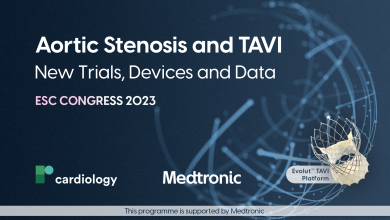Search results
Obesity and Weight Loss
Author(s):
C Richard Conti
Added:
3 years ago
Article
Author(s):
Ephraim B Beck
,
Claudia Walther
,
Antje Körner
,
et al
Added:
3 years ago
In developed countries cardiovascular diseases – including coronary heart disease with acute myocardial infarction and ischaemic heart failure, stroke and chronic cerebrovascular disease, aortic aneurysm, valve disease and peripheral arterial occlusive disease – are by far the main cause of death. Since first cardiovascular events are usually seen in mid-life and old age, atherosclerosis has long…
View more
Author(s):
Michael R Massoomi
,
Eileen M Handberg
Added:
3 years ago
Today is an age of rapid digital integration. A decade ago, technological advancement was represented by a bulky desktop computer. With the constant evolution of microprocessors and sophistication of programming, the capacity of the mainframe has been surpassed and miniaturised, so that the pinnacle of technology and innovation is quite literally in the palm of our hands. This opens a world of…
View more
Author(s):
Laurent Fauchier
Added:
3 years ago
Hypothetically, 3-hydroxy-3-methylglutaryl co-enzyme A (HMG-CoA) reductase inhibitors (statins) protect against arrhythmias in addition to their well-established secondary prevention benefits against atherosclerotic coronary artery disease. The use of statins has been suggested to protect against atrial fibrillation (AF) in some clinical studies, but remains rather inadequately explored…
View more
Author(s):
Renée Bullock-Palmer
,
Katia Bravo-Jaimes
,
Mamas A Mamas
,
et al
Added:
1 year ago
Added:
3 years ago
In this series, Mikhail Kosiborod and Hertzel Gerstein discuss the effects of Covid-19 and metabolic disease, early treatment with metabolic therapies and the Phase III DARE-19 Trial looking at dapagliflozin in Covid-19 patients.
Recorded remotely from Hamilton and Kansas City, 2020.
View more
Author(s):
Roxana Mehran
,
Martin Swaans
,
Haim Danenberg
,
et al
Added:
6 months ago
In this video series, first presented at the ESC Congress 2023 held in Amsterdam, Prof Roxana Mehran, Dr Antoinette Neylon, Dr Martin Swaans, Prof Raphael Rosenhek and Prof Haim Danenberg discuss the Expand II TAVR pivotal trial design and the rational for investigating the treatment of moderate aortic stenosis patients with Evolut™ TAVI, provide practical Echo imaging recommendations to improve…
View more
Author(s):
Gurushankar Govindarajan
,
James R Sowers
,
Craig S Stump
Added:
3 years ago
There has been an increase in the prevalence of diabetes mellitus over the past 40 years, both in the US and worldwide. The worldwide prevalence of diabetes in 2000 was approximately 2.8% and is estimated to grow to 4.4% by 2030. This translates to a projected rise of diabetes from 171 million in 2000 to well over 350 million in 2030. The epidemic of diabetes will continue to rise as there is…
View more
Statins and Insulin Resistance
Author(s):
GM Sanvee
,
M Panajatovic
,
J Bouitbir
,
et al
Added:
3 years ago
Article
Author(s):
Lee Chang
,
Robert Yeh
Added:
3 years ago
Cardiogenic shock is the leading cause of death in patients with acute ST-elevation myocardial infarction (STEMI). Characterised by a state of low cardiac output leading to end-organ hypoperfusion, cardiogenic shock complicates approximately 5–8 % of STEMIs and is associated with a mortality rate approaching 50 percent.1–3 Prompt recognition and therapeutic intervention for cardiogenic shock due…
View more














